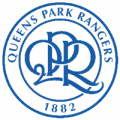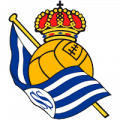Circuit de Spa-Francorchamps is the venue for the Belgian Grand Prix this weekend. It's combination of fast straights and hilly, twisty corners ensure that it is challenging and therefore a favourite of Formula One drivers and fans alike.
History Of The Track
The track at Spa is an ever-changing layout as the search for complete driver safety continues. The track was part of the origninal 1950 World Championship and even then its 14 kilometre track was considered fearsome and too dangerous.
The track was still dangerous in the 1960's which was proved by the deaths of Chris Bristow and Alan Stacey in seperate incidents but on the same weekend. In fact the track was so dangerous that the level of concern for safety was so big that the track was taken off the calendar completely in the 1970's. In the meantime the race was held at Zolder and Nivells.
Spa-Francorchamps finally returned in 1983 after the track was heavily modified in order to reduce speed and increase driver safety. The historic corners such as Eau Rouge and Blanchimont remained, despite the focus on safety, fast corners, such as the downhill double left Pouhon, were added that complimented the circuit perfectly.
The work on the track didn't finish there and in 2007 the dangerous Bus Stop chicane was reprofiled and the run-off areas have been lengthened as far as possible.
A Lap Of The Track
A lap of Spa is known to be one of the most challenging laps on the entire calender, second only to Monaco. The lap begins with a short run to the La Source hairpin, it's the slowest corner on the lap with drivers expected to take it in first gear at about 65 KPH.
The drivers then go on to another run upto the famous Eau Rouge, which is expected to be taken flat out by the majority of the grid. The drivers then go onto the Kemmel Straight. This is the longest straight on the grid and also the first DRS activation zone. The drivers are expected to be at 320 KPH at the end of the straight.
Next they have to negotiatie the tricky chicane at Les Combes. After that the drivers go through turns 10 and 11, known as Bruxelles. This then leads into the difficult, downhill double-left hander at Pouhon, the hardest part of the track. From there they go into the chicane at Campus and the left hander at Stavelot.
From there is the high speed Sector three as they accelerate through Courbe Paul Frere and then onto Blanchimont. Then the hardest braking point as they head into the extremely slow chicane at turns 19 and 20. This then opens up to the final straight, and another DRS activation zone as they go past the pit-lane and finally finish the lap. The drivers will hope to finish the lap in roughly 1 minute 45 seconds.
Track Records
Lap Information | |
| Lap Length | 7 KM (4.352 miles) |
| Race Laps | 44 |
| Race Distance | 308.52 KM (191.415 miles) |
| Fastest Lap | 1'44.503 (Jarno Trulli 2009, Qualifying 2) |
| Maximum Speed | 324 KPH (201.324 MPH) |
| DRS Zones | Pit Straight and Kimmel Straight |
Performance Facts | |
| Full Throttle | 70% |
| Longest Flat Out Section | 2015 metres |
| Gear Changes Per Lap | 45 |
Strategy | |
| 2015 Prime Tyre | Medium |
| 2015 Option Tyre | Soft |









































